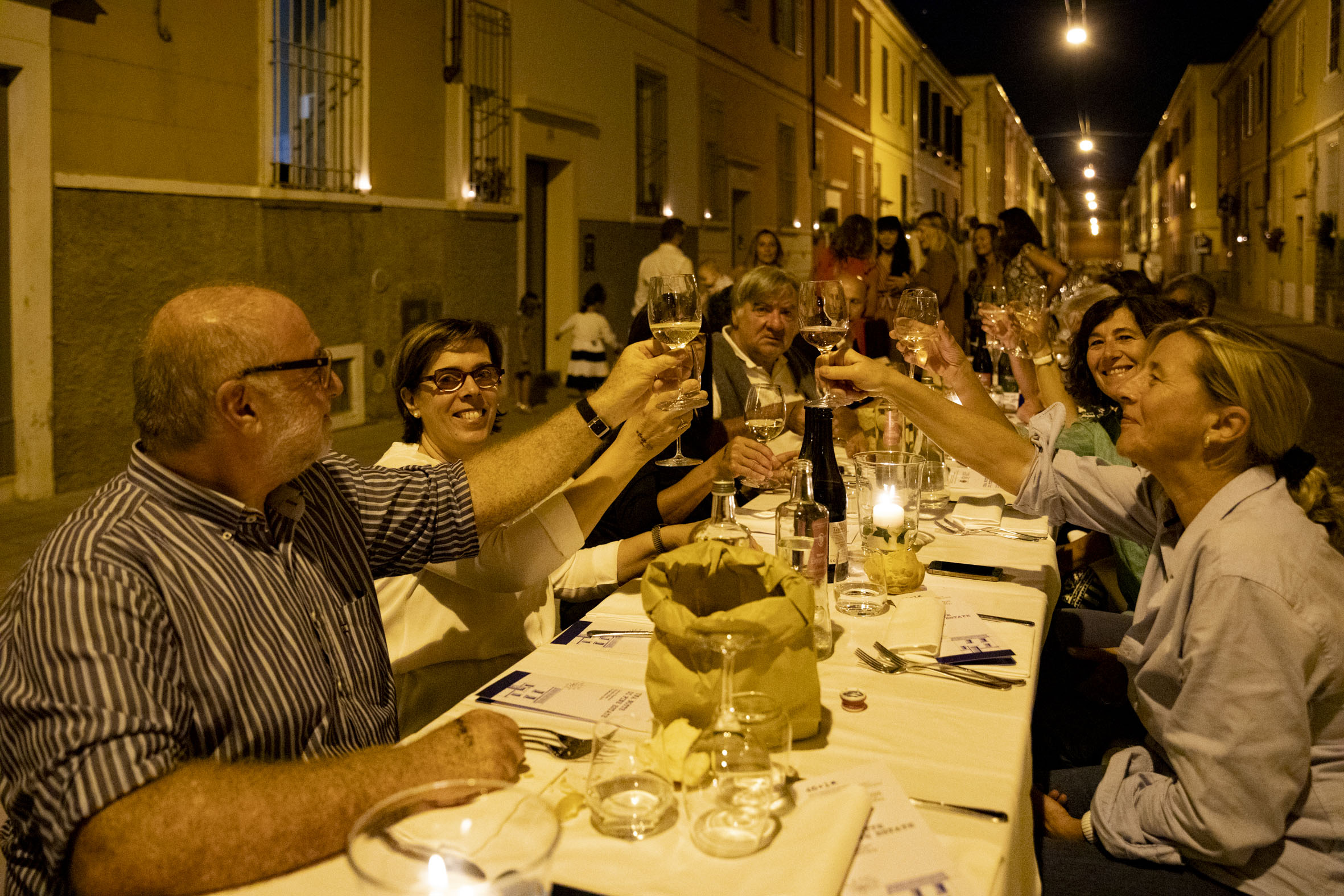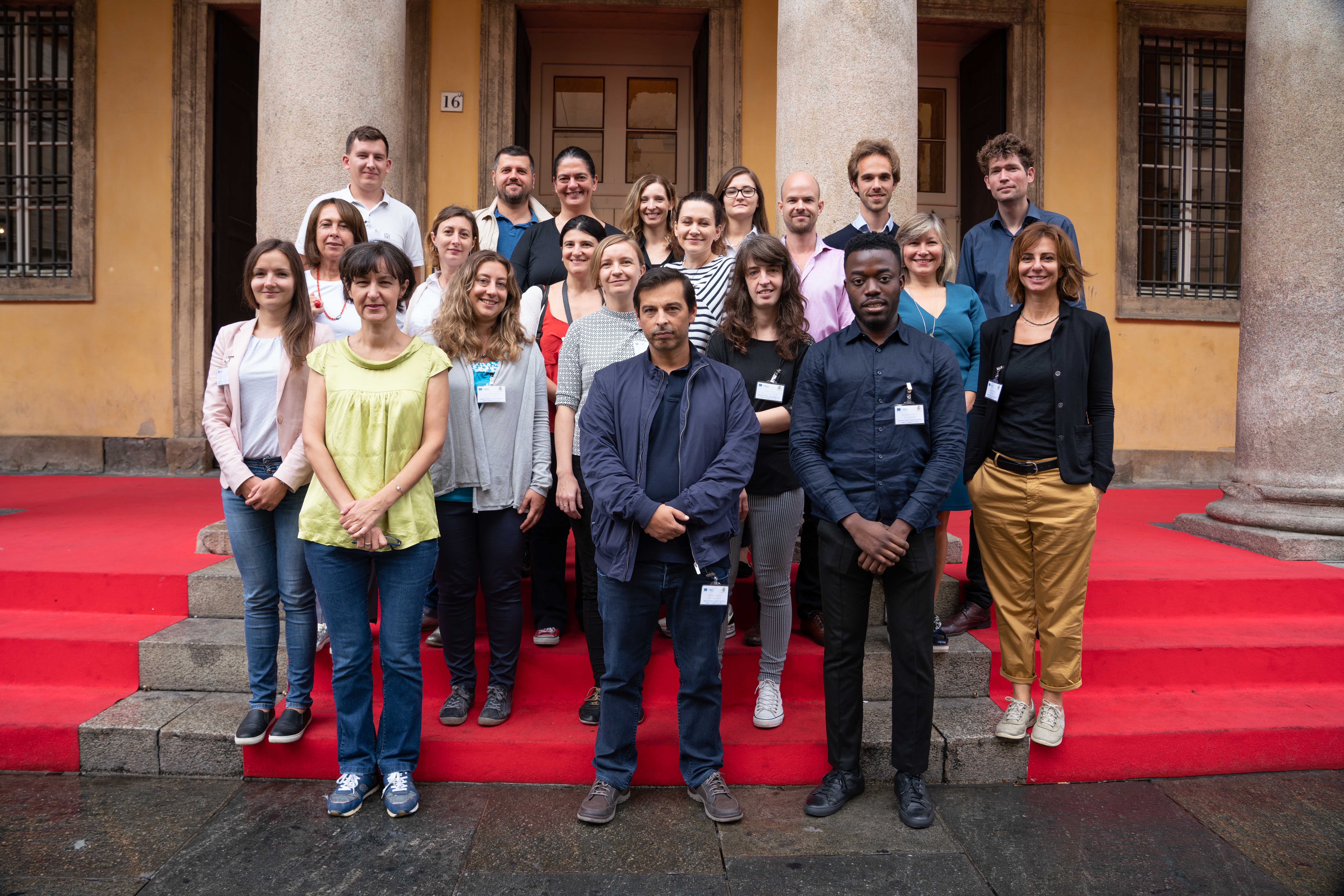Thriving Streets: Designing mobility for attractive cities
Edited on
05 February 2020Ten European cities join forces in the new ‘Thriving Streets’ network. Their approach: transform streets to create people-friendly places, encourage walking and cycling, and reduce car-dependency. In this way they work on a more healthy, attractive, accessible, inclusive and thriving future of their cities.

Bringing streets to life
On September 14th, a remarkable transformation takes place in the Via della Salute in Parma, Italy. For one day, citizens clear the street from the cars that usually dominate the space. Their place is taken instead by huge tables, set for a dinner to host about 200 people from the neighbourhood. As the neighbours start to prepare the event, kids come out of their houses, and started using the street as their playground. Like birds that feel as if spring is coming, the kids just feel it is their time to claim the space.
Two weeks later, Patrizia Marani introduces an international delegation to the street and the wider neighbourhood. The visit is part of the kick-off meeting of the Thriving Streets network, of which Patrizia (working for the Municipality of Parma) is the coordinator. To her, the dinner event is a clear example how the use of streets can encourage social cohesion, create a positive dynamic and increase attractiveness. The next two years, Parma will commit to work together with citizens, shop owners and local organizations to spark a similar dynamic in the whole neighbourhood of Oltretorrente.

PHOTO 1: Neighbourhood Dinner in Via della Salute, Parma. Photo by Annarita Melegari
Thriving streets: Thriving Local Economy and Thriving Communities
Each of the partners in the Thriving Streets is exploring how sustainable mobility can lead to local economic and social benefits, by putting people central in the design and use of streets. All these 10 European cities have their own, yet related, challenge as focus. For Parma, the issue can be illustrated with a picture of a street with many empty shops. A depressing sight, but a reality in many cities across Europe. The local shops are challenged by the development of shopping malls and more recently online shopping. By making the streets attractive for people, the (economic) activity can prosper again.
How to strengthen the local economy in city centres and neighbourhoods, and increase their attractivity? This question is key also for other partners. The cities of Klaipeda (Lithuania) and Radom (Poland) are focussing for this question on the historic city centres. The cities of Nova Gorica (Slovenia) and Antwerp (Belgium) instead focus on off-centre neighbourhoods.
Questions of inclusivity also arise when creating thriving streets, for example about how the public space could lessen gender-inequality or how to overcome transport poverty. The cities of Igoumenitsa (Greece) and Santo Tirso (Portugal) identified youth as a vulnerable and underrepresented group. Together with schools, they will work on child-friendly school environments and safe commuting. This means overcoming cultural barriers for the acceptance of walking and cycling by both children and their parents, as well as playing into the health benefits of active mobility.
For the district of Southwark, London (UK), the target is also inclusivity, but focussed on local businesses. Planned developments in the area will bring about 27,000 new homes and 26,000 new jobs. The traffic flowing through a strategic route, Lower Road, competes with the needs of the local neighbourhood. Communities are left disjointed with poor active travel access to local shops. How to make sure the ‘old’ local businesses and communities will not be left out?
Starting point in all cities is a specific street or neighbourhood. The impact of the interventions developed at such place goes beyond its limited spatial scale. The local changes give rise to changing mobility flows in the city, can shake up engrained behaviour patterns, and go hand in hand with improvement of public transport on city level. Two partners in the Thriving Streets network focus on the relation between pedestrianization of the city centre and the related changes in mobility patterns. Not surprisingly, these are both metropolitan authorities, from Debrecen and Oradea.

PHOTO 2: Cycling classes in Santo Tirso – photo by Municipality of Santo Tirso
Working together to make Thriving Streets happen
How attractive the ambition of turning streets into thriving streets might seem, the process is not an easy matter, of course. So… how?
First of all, it is about getting different perspectives and domains on board in the development.
Creating thriving streets is not just about mobility or spatial planning, but also very much about health, local economy, social cohesion, equal opportunities, etc. It can help to make benefits of such transformation explicit, by empowering the people who will benefit to raise their voice. It can also be worth trying to translate benefits into ‘hard’ indicators, such as growth in customers or increase in social contacts in a street.
Equally, to get many people to contribute to and support the transformation, a lot of effort will go to co-creation. This helps overcome resistance. Too often, politicians and other decision makers drop their support to ambitious transformations as soon as they are confronted with angry and vocative local business-owners or car-users, who feel passed over. Most importantly, co-creative methods help to create better solutions by tapping into local knowledge and linking to the ambitions and energy of different stakeholders. The example of the dinner-activity in Parma is just one of many.
Join our learning journey
In the coming years, the ten cities involved will work together with local stakeholders on their respective ambitions, sharing a common base: creating thriving streets for a thriving city. The cities will go on a learning journey together, exchanging experiences and inspiration. We don’t start from scratch, but build on the existing experiences of cities around Europe, and take inspiration from other projects such as Living Streets and Happy Streets.
If you want to stay up to date or share your own experiences, please join our learning journey. You can express your interest and subscribe for updates by sending an e-mail to p.marani@comune.parma.it.

PHOTO 3: The city teams involved in Thriving Streets – photo by Municipality of Parma
This URBACT III project is co-financed by the European Regional Development Fund.
Thanks to Nena Bode (DRIFT) for contributing to this article, and the partner cities for their inputs.
Submitted by Chris Roorda on




